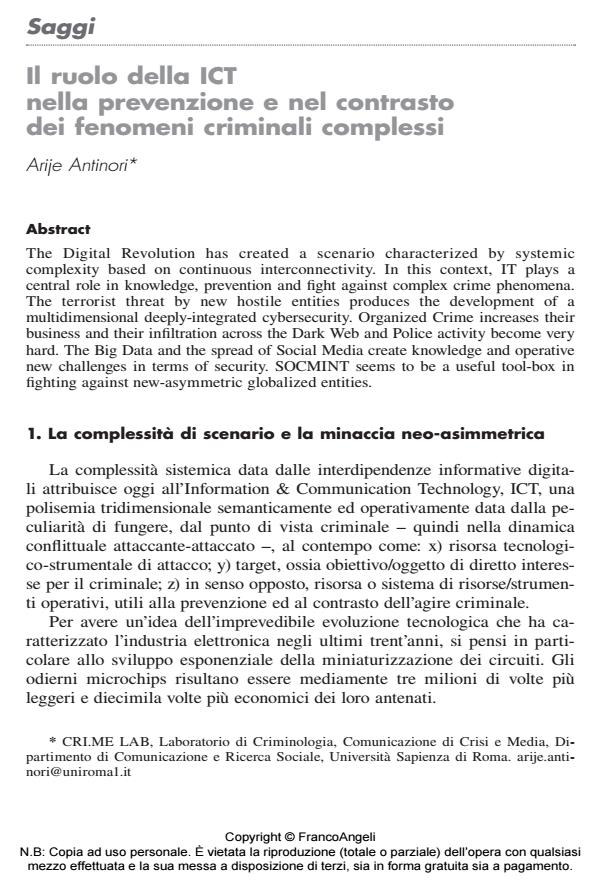Il ruolo della ICT nella prevenzione e nel contrasto dei fenomeni criminali complessi
Journal title SICUREZZA E SCIENZE SOCIALI
Author/s Arije Antinori
Publishing Year 2014 Issue 2014/1
Language Italian Pages 15 P. 23-37 File size 119 KB
DOI 10.3280/SISS2014-001003
DOI is like a bar code for intellectual property: to have more infomation
click here
Below, you can see the article first page
If you want to buy this article in PDF format, you can do it, following the instructions to buy download credits

FrancoAngeli is member of Publishers International Linking Association, Inc (PILA), a not-for-profit association which run the CrossRef service enabling links to and from online scholarly content.
The Digital Revolution has created a scenario characterized by systemic complexity based on continuous interconnectivity. In this context, IT plays a central role in knowledge, prevention and fight against complex crime phenomena. The terrorist threat by new hostile entities produces the development of a multidimensional deeply-integrated cybersecurity. Organized Crime increases their business and their infiltration across the Dark Web and Police activity become very hard. The Big Data and the spread of Social Media create knowledge and operative new challenges in terms of security. SOCMINT seems to be a useful tool-box in fighting against new-asymmetric globalized entities.
Arije Antinori, Il ruolo della ICT nella prevenzione e nel contrasto dei fenomeni criminali complessi in "SICUREZZA E SCIENZE SOCIALI" 1/2014, pp 23-37, DOI: 10.3280/SISS2014-001003